Are you curious about how to drill into a tree safely, without causing any harm or damage? If so, you’ve come to the right place. Learning how to properly drill into trees can be a tricky process, but with this comprehensive guide, you’ll be well on your way to understanding this unique skill and finding out what it takes to drill into a tree without hurting it. From choosing the right drill bits for your needs to avoiding potential pitfalls and safety precautions, this guide covers everything you need to know about drilling into trees safely. So, don’t delay – start exploring the exciting world of safe tree drilling today!
How Do Drilled Trees Recover?
Drilled trees can recover naturally, depending on the severity of the injury. If the tree is healthy and strong, it may be able to heal itself without additional assistance. In some cases, however, it might require help from a certified arborist to get the tree back to its fullest potential.
When helping a drilled tree recover, the arborist will first assess the amount of damage and determine if any further treatment is necessary. This might include pruning off dead or broken limbs, applying fungicides or nutrients to promote growth in weakened areas, and even installing structural supports like cables or braces. After this initial assessment and treatment plan are agreed upon, regular maintenance will be required over time to ensure that new growth continues and that the tree can thrive.
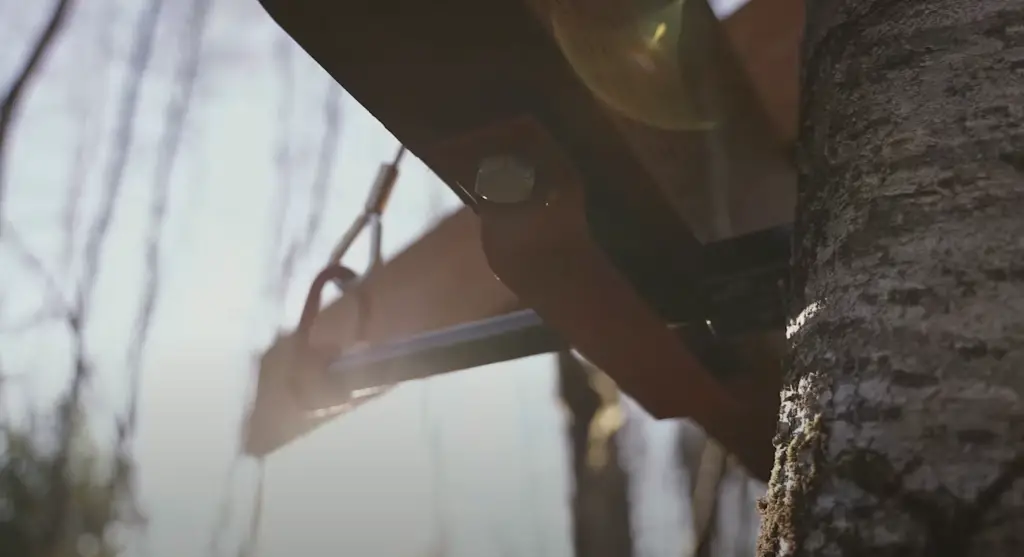
Homeowners need to take proper care of their trees, especially those that have been drilled. Regular pruning, mulching, and fertilizing are necessary to keep a tree healthy in the long term.
With this ongoing attention and care, a drilled tree can not only survive but also continue to thrive despite its injury [1].
How to Drill Into a Tree Without Killing It
Choose the Right Tree
The first step in drilling into a tree without killing it is to choose the right tree. You’ll want to look for larger, older trees with thick trunks since these are more likely to survive any damage you cause while drilling. Trees that are already in poor health or have visible signs of insect infestation should be avoided if possible.
Use an Auger Bit
Once you’ve identified the right tree, you’ll need to select the proper drill bit type for your project. Auger bits are designed specifically for this purpose and provide the best chance of success when drilling into a live tree. Choose one with at least 12 inches of reach so that it can penetrate deep enough without damaging too much of the tree’s bark or inner core.
Drill at an Angle
The most important step in drilling into a live tree without killing it is to make sure you drill at an angle. This will ensure that the bit penetrates deep enough while avoiding any vital areas of the tree that could be damaged if drilled straight down. Make sure to use slow, steady strokes and keep a close eye on the drill bit as it proceeds. If you see any signs of excessive bark tearing or wood chipping, stop immediately and adjust your technique.
Pick the Right Spot
When drilling into a tree, it’s important to pick the right location. If possible, you should avoid areas near major branches or other vital parts of the tree. Instead, look for spots that are far away from these areas and have plenty of room for your drill bit to work without causing too much damage.
Be Careful When Removing the Bit
The final step in drilling into a live tree without killing it is to be very careful when removing the drill bit. Make sure to take your time and slowly back out the bit so that you don’t cause any further damage to the tree. Once the bit has been removed, inspect the area one last time to make sure there isn’t any excess sawdust or bark that could lead to infection.
Choose the Right Types of Screws
You’ll need to choose the right types of screws for your project. Screws that are too long or sharp can damage the tree’s bark and core, leading to infection or decay. Steel screws with a blunt tip are generally considered best for live trees because they won’t cause as much harm when inserted.
Take Caution With The Holes
When inserting screws into a live tree, it’s important to make sure that the holes are not too deep. If they go too far in, they could cause significant damage to the inner core of the tree and lead to infection or decay. Take your time when drilling and be sure to measure each hole carefully before inserting the screw.
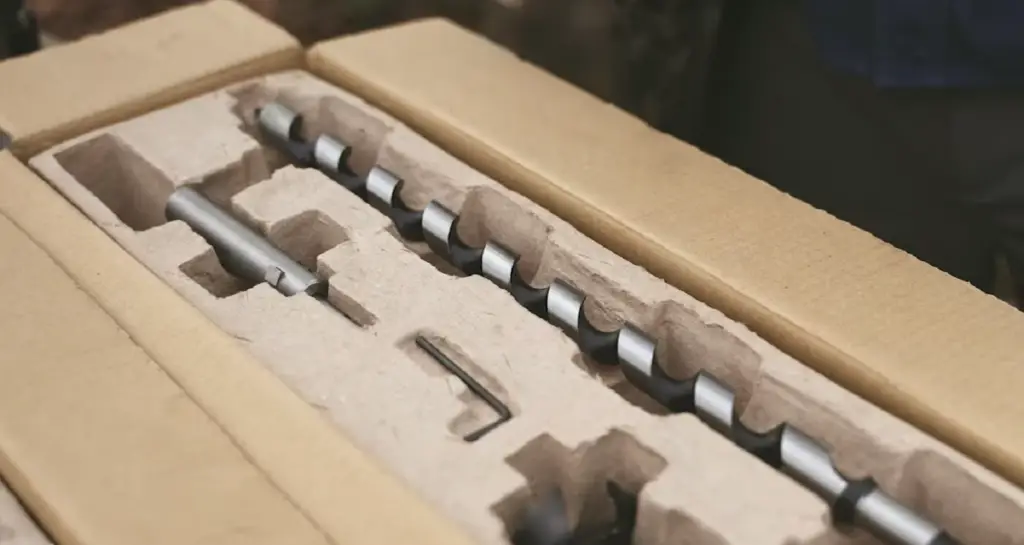
Drill Slowly and Consistently to Prevent Splitting the Wood
Drilling too quickly or using too much force can cause the wood to split, leading to damage and possible infection. Make sure to use slow, consistent strokes when drilling, and be sure not to apply excessive pressure.
Apply Force to the Drill Bit
It’s important to apply some force to the drill bit when drilling into a tree. This will help ensure that the bit penetrates deep enough without causing too much damage. Make sure to use gentle pressure and be mindful not to cause any further harm to the tree.
Fill in The Hole with Wood Sealant or Adhesive
Once you’ve finished drilling, it’s important to fill the hole with wood sealant or adhesive. This will help protect the tree from infection or decay and ensure that the project lasts for many years to come. Make sure to read the instructions carefully before using any type of sealant or adhesive so that you can be sure it won’t do more harm than good.
Avoid Adding Too Many Holes
Be sure to avoid adding too many holes. The more you drill into a tree, the more likely it is that you’ll cause significant damage and reduce its lifespan. If possible, plan your project so that you don’t need to create more than two or three holes in total.
Watch out for the Trees Surrounding Your Project
Finally, it’s important to be mindful of the trees surrounding your project. Make sure that the vibrations from drilling don’t cause any harm to these other trees, as this could lead to infection or decay [2].
Some Other Things You Should Keep in Mind
What Kind of Drill Bit to Use
When it comes to drilling, you need to make sure that you are using the correct type and size of the drill bit. This will depend on what material you are working with, as well as the size of the hole that needs to be drilled. Generally speaking, steel bits work best for metal, while wood bits are better suited for drilling into softwood or hardwoods. For masonry projects, using a carbide-tipped or diamond drill bit is recommended.
Consider Pilot Holes
Drilling pilot holes can help ensure that your larger holes come out straight and even. They also reduce the risk of splitting softer materials like plywood or particle board when making large-diameter holes. When drilling into harder materials such as concrete or brick, the pilot hole should be slightly wider than the drill bit that will be used for the larger hole.
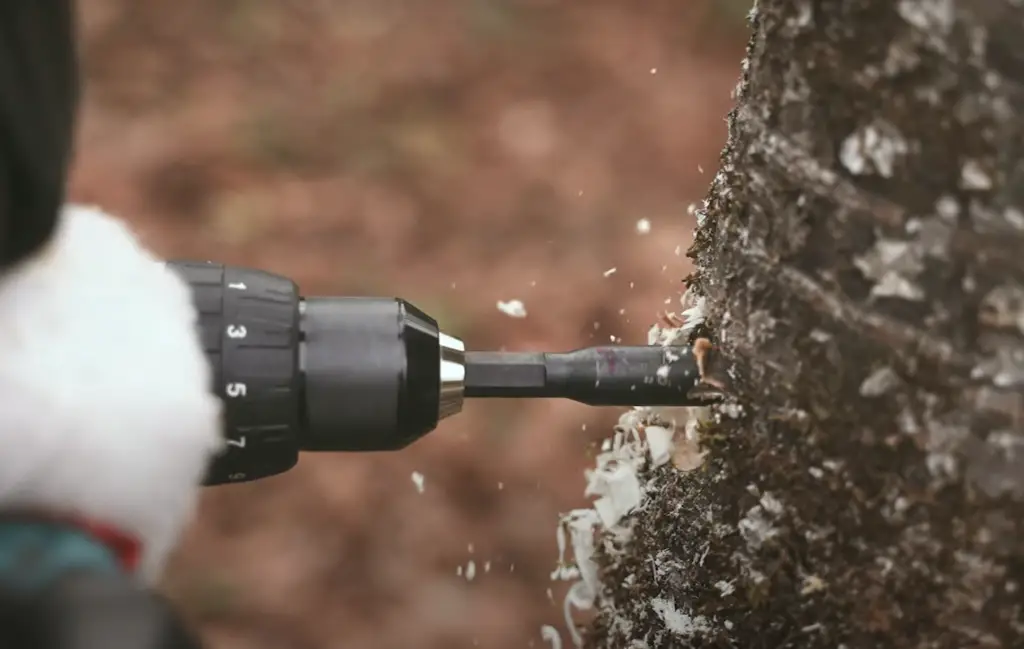
Using a Clamp
Clamping your workpiece down before drilling can help ensure that you make an even and accurate hole. This is especially important when using larger bits, as they require more force to penetrate the material. It also helps to reduce slippage while drilling which can cause inaccurate results. Additionally, if you’re working with fragile materials such as glass or porcelain tile, clamping them down will help prevent any fractures from occurring during the drilling process.
Lubrication
When drilling hardwoods or other dense materials, it’s a good idea to lubricate your drill bit with oil. This helps reduce friction and prevents the drill bit from overheating, which can cause it to dull or break. Additionally, it will make drilling much easier as there will be less resistance when the bit is in motion.
How Deep to Drill the Hole
Knowing how deep you should drill a hole can be tricky, depending on the material and your specific project. A good general rule of thumb is that the depth of your hole should at least be twice as long as the diameter of your drill bit. This will help ensure that your hole is properly drilled without damaging any underlying material. However, if you are drilling into materials like concrete or brick then it may require deeper holes to penetrate through them completely. It’s best to check with a professional before attempting this type of work.
What to Do with The Hole
Once you have drilled your hole, it’s important to take a few steps to ensure that everything is up to code. This includes cleaning the hole out with compressed air or a vacuum cleaner. Additionally, depending on what material you are working with and the size of the hole, you may need to insert a sleeve or patch to reinforce it. Doing so can help prevent cracks from forming and provide additional support for whatever you are attaching to the hole.
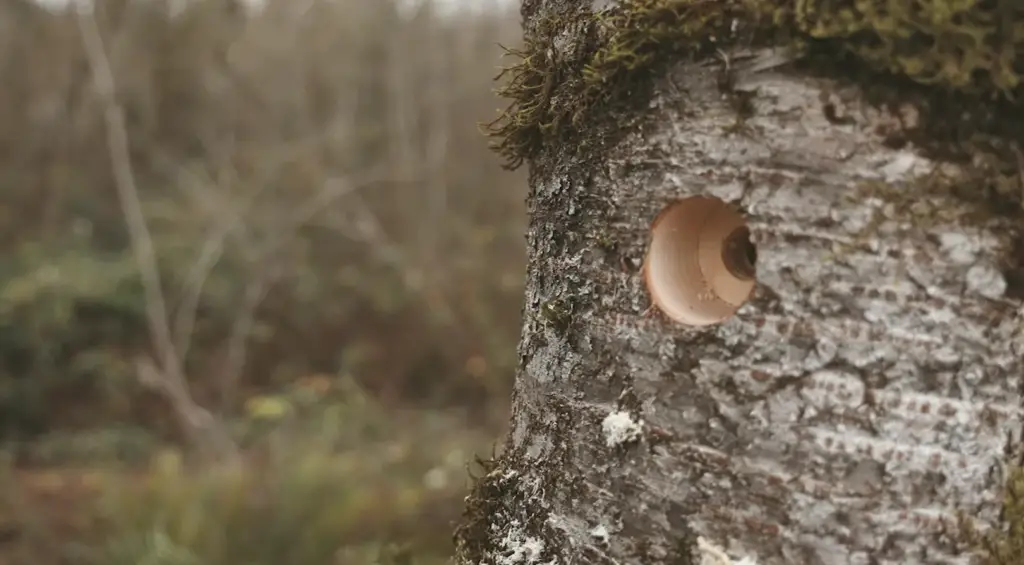
Do Nails, Screws, Or Staples Hurt Trees?
No, nails, screws, or staples do not hurt trees when used properly. When installing signs, furniture, or other items to a tree it is important to use the right hardware and techniques to avoid damaging the tree. Nails should be flush with the bark surface of the tree so that they do not extend into the living tissue beneath. Nails are typically driven near branches so that they are supported by woody material rather than being driven directly into the cambium layer. Screws are preferable because they have less potential for damage. Staples should not be used anywhere on a tree due to their sharp points and potential for puncturing delicate bark tissues.
When using any type of fastener on a tree, it is important to minimize the number of holes and punctures to reduce the risk of injury to the tree. When attaching items to a tree, use as few nails, screws, or staples as possible, and make sure they are located away from major branches or trunks. It is also important to check fasteners regularly and replace any that become loose or corroded so that they do not cause further damage. In addition to using proper hardware techniques, it is important to avoid placing too much weight on tree branches or trunks when installing objects onto them. This can cause irreparable damage by breaking limbs or damaging bark tissue.
Additionally, some trees may have hollows in them which could collapse if too much weight were placed onto them. Care should be taken to avoid causing any unnecessary damage to trees when installing signs, furniture, or other items on them. If the job requires more than a few nails, screws, or staples it may be best to consult with a professional arborist who can help determine the best course of action for safely affixing objects without harming the tree.
In general, nails, screws, or staples do not harm trees when used correctly and minimal holes are made in the bark. It is important to use proper techniques when attaching anything to a tree so that damage does not occur and the tree remains healthy and strong. Following these steps can ensure that no unnecessary harm comes to our beloved trees [3].
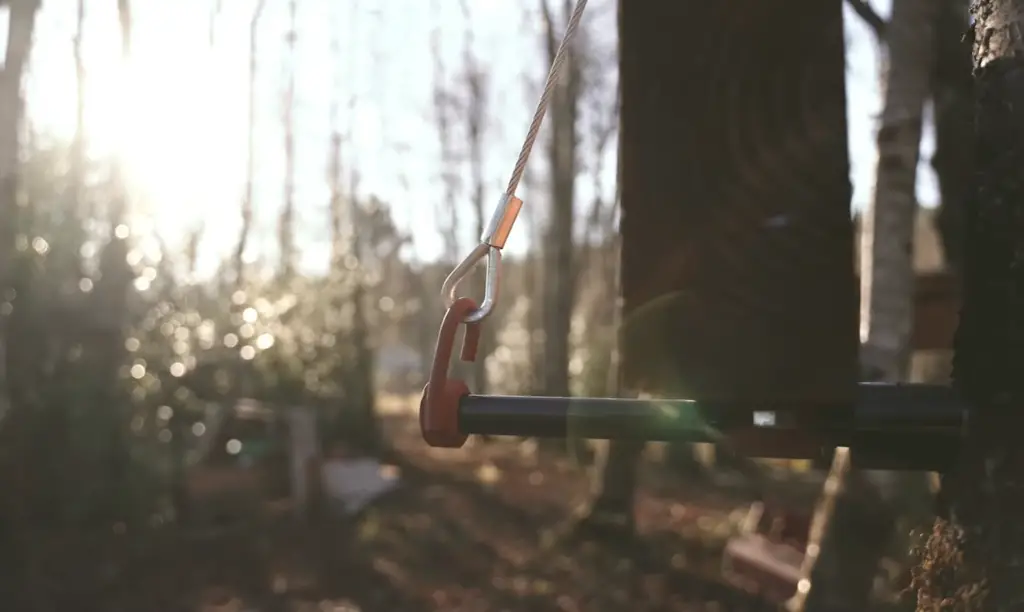
FAQ
Can you screw into a tree without hurting it?
Yes, you can screw into a tree without hurting it as long as you take appropriate precautions. Before beginning, make sure to assess the health of the tree and avoid any areas that may be weakened or damaged. Use stainless steel screws with sharp points and wide threads for a secure fit. Make sure to insert them carefully and not torque them too tight, which could cause damage. If possible, use special tree-friendly washers or spacers between the screw head and bark to prevent damage to the tree’s tissues. Lastly, always check back every so often to make sure your screws are still secure but not causing any additional harm. With these tips in mind, you can safely screw into a tree without harming its growth potential!
What is the best way to protect a tree from harm?
The best way to protect a tree from harm is by avoiding activities that could cause damage, such as construction or excavation near its roots, compacting the soil around it, using heavy machinery in its vicinity, and cutting off branches or trunks. Additionally, you should be careful when pruning the tree and use clean, sharp tools to minimize tissue damage. Finally, make sure to provide your tree with adequate water and nutrition regularly to promote healthy growth and reduce vulnerability to pests and disease. By following these steps, you can keep your trees safe and healthy for years to come!
Are there any easy ways to identify sick trees?
Yes! There are some easy ways to identify sick trees. Look for yellowing or wilting leaves, discolored foliage, cracked or peeling bark, and signs of fungus, pests, or disease. Another indication of a sick tree is when its branches are dying back from the inside out. If you observe any of these signs in your tree, reach out to a certified arborist who can assess the health of your tree and provide advice on how to best proceed.
What should I do if my tree has been damaged?
If your tree has been damaged due to construction or excavation near its roots, heavy machinery in its vicinity, severe weather events such as ice storms or high winds, improper pruning practices, etc., contact a certified arborist right away. They can assess the damage and provide advice on how to best proceed, such as pruning dead or damaged branches, providing supplemental nutrition or water, or even removing the tree if it is deemed irreparable. Taking prompt action in these situations can help save your tree from further harm and preserve its health for years to come.
Does drilling holes in a tree hurt it?
Drilling into a tree can cause damage if done improperly, so it’s important to take the necessary precautions. Using stainless steel screws with wide threads and sharp points will provide a secure fit without damaging the tree’s tissues.
Additionally, you may want to use washers or spacers between the screw head and bark to help reduce any potential damage. With these tips in mind, you can safely drill holes in your tree without causing lasting harm.
Useful Video: Tree Drilling
Conclusion Paragraph
Drilling into a tree is a complex and challenging task that requires specialized knowledge, skill, and equipment. It’s not something to be taken lightly as it can cause serious damage to trees if done incorrectly. For these reasons, it’s best left to trained professionals with the right tools and experience. By following these steps and using the proper techniques for drilling into a tree, you can ensure that your project is completed safely and successfully. With the right preparation and care, you can rest assured that your drilling project will be successful without causing any harm to the tree or its surroundings.
References
- https://www.treehousesupplies.com/blogs/treehouse-supplies/is-drilling-a-hole-in-a-tree-kill-it
- https://diyquickly.com/how-to-drill-into-a-tree-without-hurting-it/
- https://blog.davey.com/do-nails-screws-or-staples-hurt-trees/






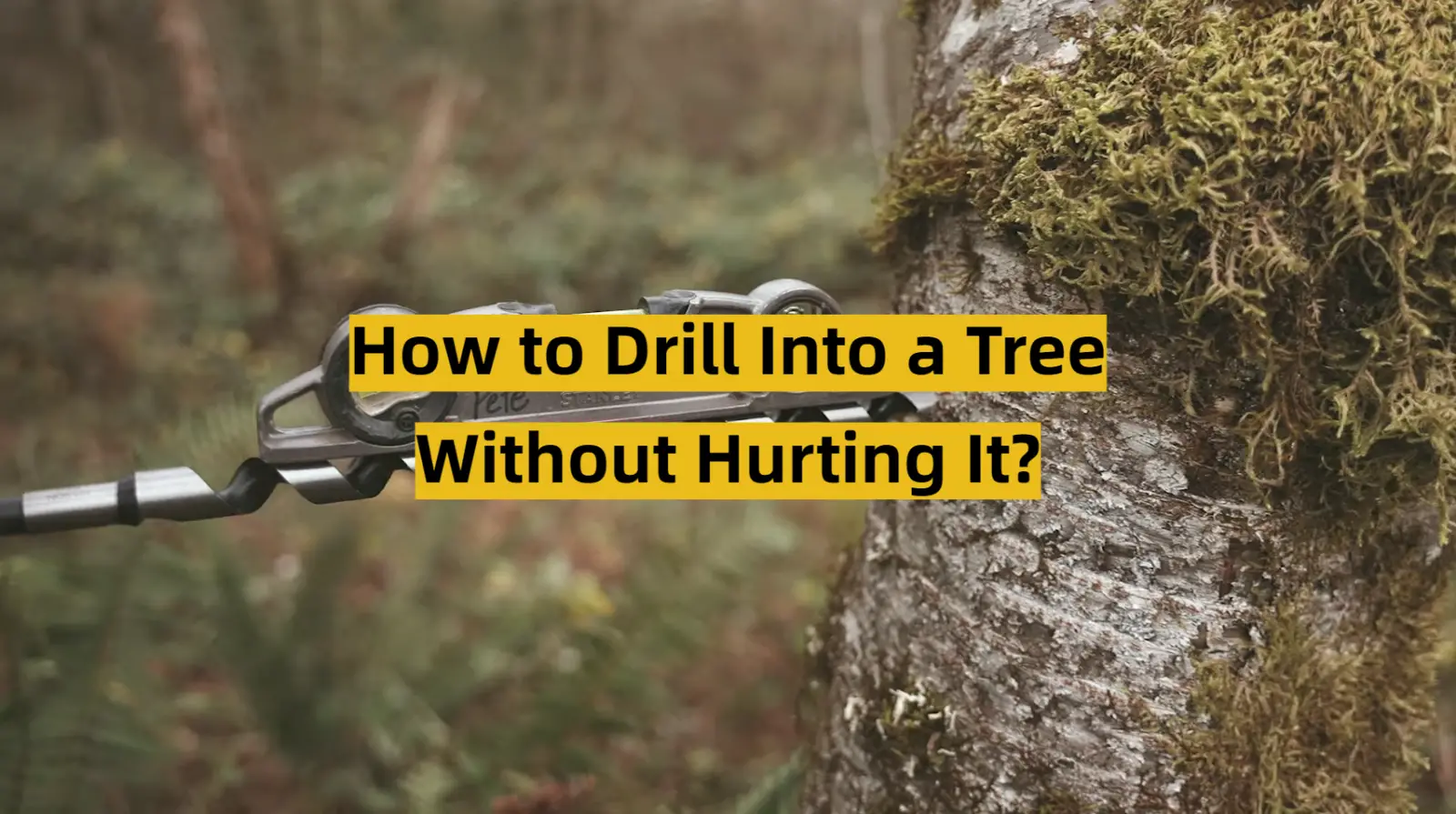






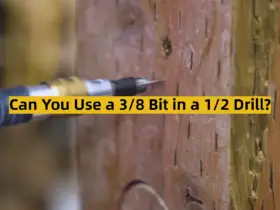
Leave a Reply